These are answers to the questions we are most frequently asked. If you don’t find the information you are looking for, you will find our contact details here — do get in touch.
FAQs
IF I ORDER PAPER FROM YOU ONLINE, WILL YOU SEND IT ROLLED OR FOLDED?
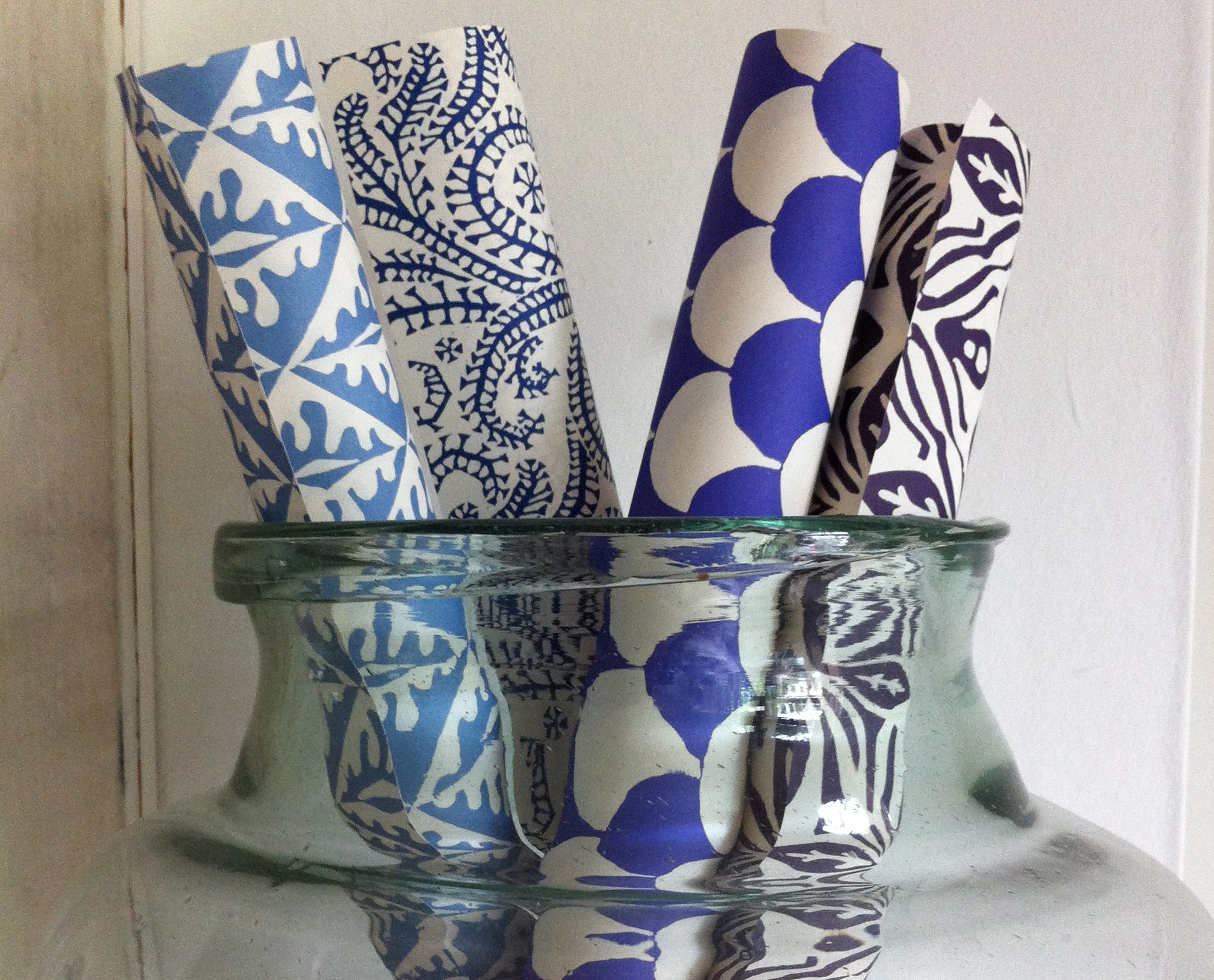
We absolutely never crease our paper prior to sending it. The exact method of packaging depends on the number of sheets ordered, and what other items, if any, you order at the same time. It will either be rolled, curled, or sent flat. We will use our discretion to make sure that your paper arrives uncreased and undamaged.
IS CAMBRIDGE IMPRINT PAPER LONG- OR SHORT-GRAINED?
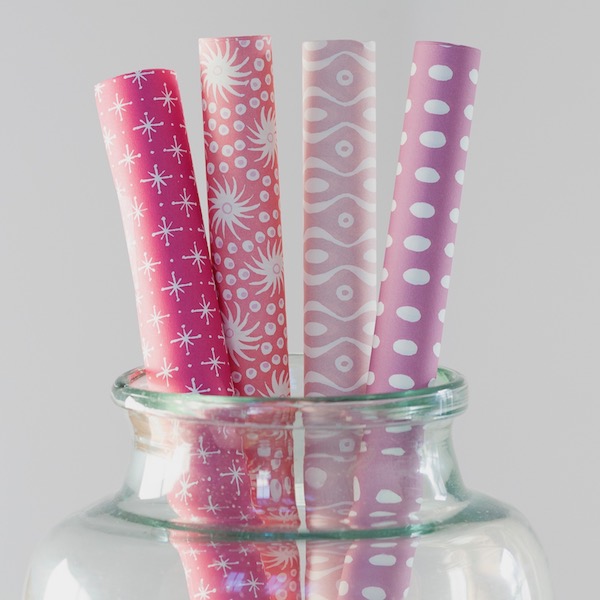
At present, Cambridge Imprint paper is short-grained. That is to say, the grain of the paper runs across the paper from side to side, rather than down the paper from top to bottom. If you are purchasing our paper for bookbinding purposes, you should bear this in mind: you may need to choose patterns that have no directionality.
You probably wonder why our paper is short-grained. Finding the perfect paper stock to print on is not easy. For us there are some non-negotiable qualities that we require. In addition to its rich warm ivory colour, smoothness and suitability for taking ink and pencil, the paper we use has very sound environmental credentials. Unfortunately it is only available in a size that requires us to cut it in half before we print on it: hence the short-grain. We hope in the next couple of years that our business will reach a size that would mean having paper made specially for us is a financially viable option. When that happens our paper will become long-grained.
WHY DO SOME CAMBRIDGE IMPRINT PRODUCTS COME IN A PLASTIC SLEEVE?
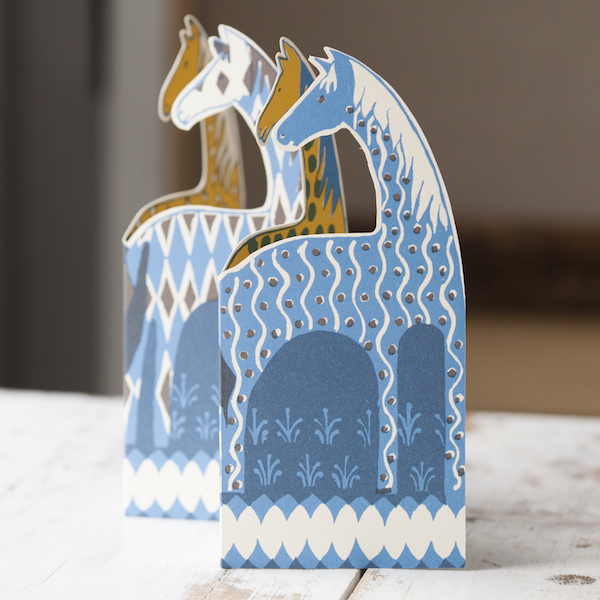
Our light environmental footprint is important to us. We minimise packaging as much as we can and we use no plastic when packing orders, except in rare cases where we may re-use bubble-wrap in which something has been delivered to us. Our inks are vegetable-oil based and our paper and card is uncoated, so that it is completely compostable as well as recyclable. However, some of our cards and notebooks do come in a minimal protective cellophane sleeve, because we have found that when these vulnerable items are not protected they are too easily damaged, and the rate of spoilage is very high. On balance, we feel that the environmental cost of the sleeve is outweighed by the much higher environmental cost of throwing away spoiled cards and notebooks. However, we would prefer to use no plastic whatsoever in our products. Therefore we try wherever possible to use a biodegradable film sleeve instead, looking for a solution to this problem which has the least impact.
Biodegradable film is made from annually renewable corn and other sugar starches. The bags we usually use are EU certified (EN 13432) and have a 4* ‘OK biobased’ rating. The film biodegrades completely into CO2, water and biomass (organic matter used as a fuel) under what are termed as ‘industrial composting conditions’ – 6 months at 58° C – but a domestic compost heap that’s being actively managed should be able to achieve those conditions.
ARE CAMBRIDGE IMPRINT PRODUCTS ALL MADE IN THE UK?
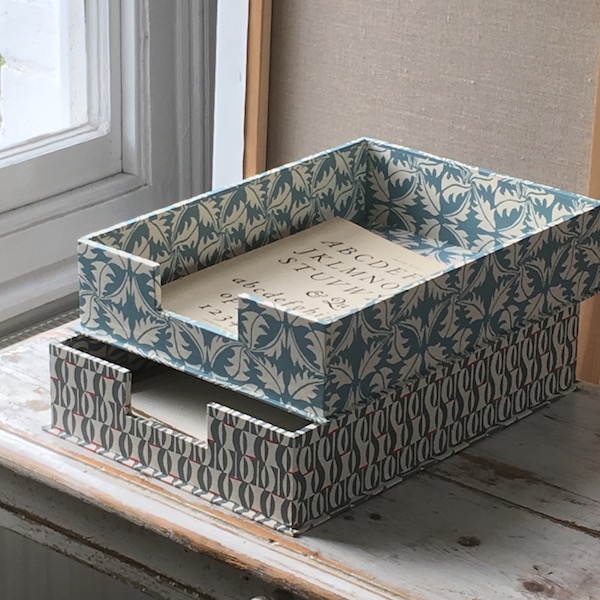
Nearly all Cambridge Imprint products are designed, manufactured, finished and packaged in the United Kingdom. The matte ivory paper and card stock that we print on is milled in Scotland. The patterns are printed in Bethnal Green in London. From there the patterned paper travels all over the country, up to Sheffield and Stoke-on-Trent, across to Bedfordshire and Suffolk and down into Devon, to all sorts of small UK manufacturing businesses where it is made into other products. We work with a range of box-makers, book-binders, potteries and textile printers to make our patterns and papers into enduring, resilient, beautiful, useful things.
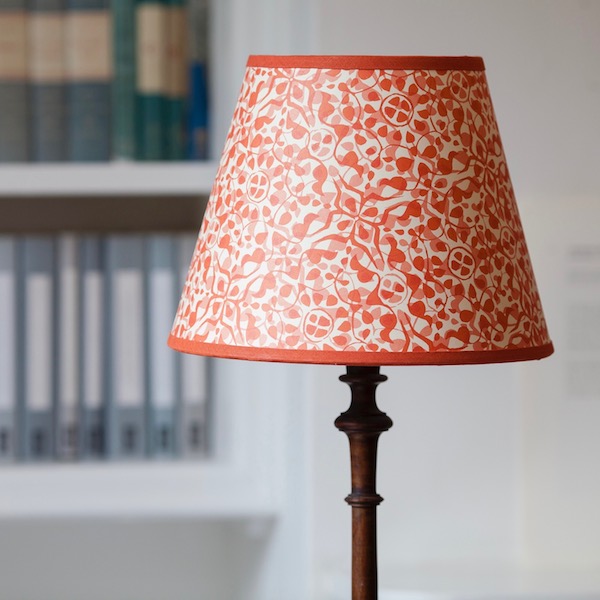
There are a few products for which we have been so far unable to source a UK manufacturer. Our birch trays are made using our paper by FormPress, a small Swedish firm on the island of Öland. Our leather Pocket Folios are made in Austria by Paper Republic, a company with the highest standards for creation of an ethical product in terms of both animal welfare and environmental impact of the tanning process. Our lampshades are made from our own patterned card in India, in collaboration with Samarkand Design, a small English business with long-term production links there.
IS CAMBRIDGE IMPRINT PAPER RECYCLED?
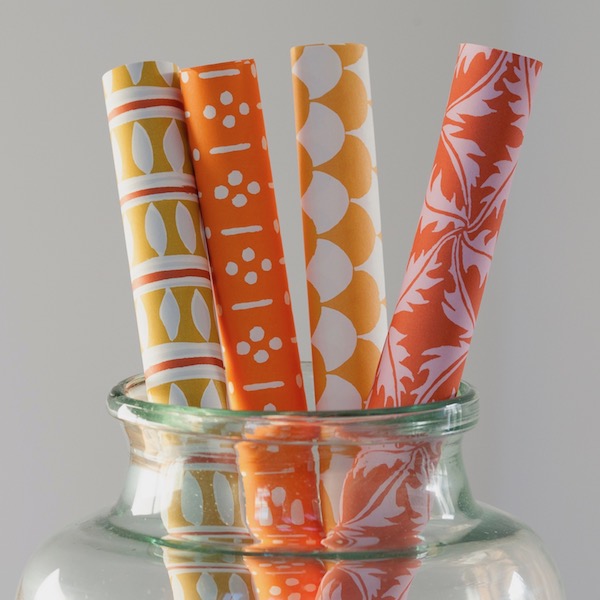
No, most of our paper is not recycled, but we are keenly interested in sustainability and ecology. We are a member of a Forest Stewardship Council® certified group. (License code: FSC®-C004309.) The paper and board we print on is all FSC-certified. This means that it is sourced from responsibly-managed forests under a ‘chain of custody’ scheme: every product can be traced back, through the paper mill, to the forest the tree originally grew in. All the paper for the insides of the notebooks is also FSC-certified, with the exception of the scrapbooks, where the coloured pages are made of recycled paper. Because our paper is uncoated and printed with vegetable oil-based inks, it is both completely recyclable and biodegradable. Our printer, Calverts, is a workers’ cooperative with a long-established track-record in minimising environmental impact.
HOW DO I ASSEMBLE MY POCKET FOLIO?
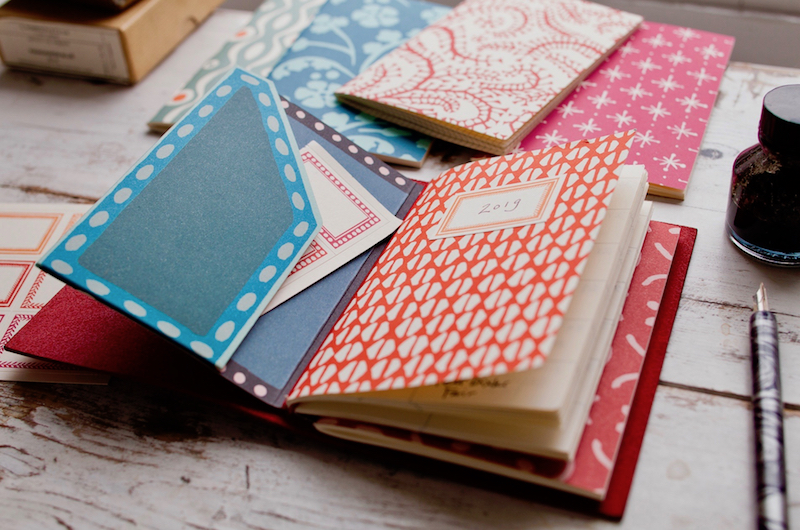
There are all sorts of different ways of setting up your Pocket Folio. If you google ‘journalling’ you will find a very buoyant online community of people sharing tips and ideas around the general subject of customisable journals and notebook covers.
The basic concept is extremely simple. Your Pocket Folio should have come with a Timeless Planner already held in place behind one of the two elastic bands that run vertically up the inside of the spine. You can add another notebook of your choice in the same way to be held by the other elastic band. We make memo books of the correct size in plain, lined and graph paper options, and in a wide range of colours and patterns. If you don’t want to use the Timeless Planner you can of course replace it with a different notebook. The idea is to create a tool that will do all of the different things that you want notebooks for, all held together in a single cover.
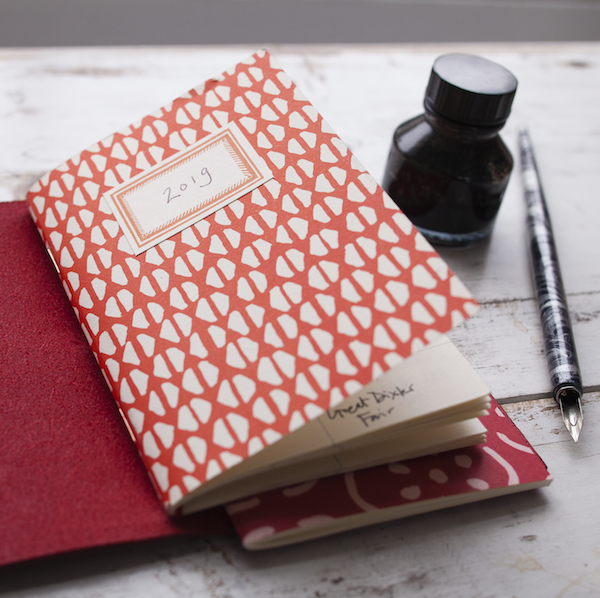
If you have a card receipt holder you can slide this in behind one or both of the notebooks, so that it closes around the outside of the book(s): this is useful for keeping stamps, receipts, tiny bits of paper that you need to keep track off. (Some people use one and cannot manage without it — but there are others who cannot imagine why one might need such a thing.)
There are various options for adding still further inserts. One possibility is to slide the front cover of an extra notebook around the back of one of the notebooks that is already in there, so that the new notebook is held in place next to the original notebook. Alternatively, use a skewer to gently enlarge the holes top and bottom in the spine of the leather cover, so that you can insert another elastic. The leather is strong and flexible and will be fine with this treatment. Then you can add further notebooks, each held by a single vertical elastic. A final alternative is to simply pop one or more extra notebook(s) loose inside the cover – the horizontal elastic that holds everything closed will be enough to keep it all together.
If you want to, it can be handy to slot a pen in between the edge of the books when they are closed and the elastic band that holds it all. It will stay put so that you always have a pen to hand.
IS CAMBRIDGE IMPRINT PAPER SUITABLE FOR WRITING ON WITH A FOUNTAIN PEN?
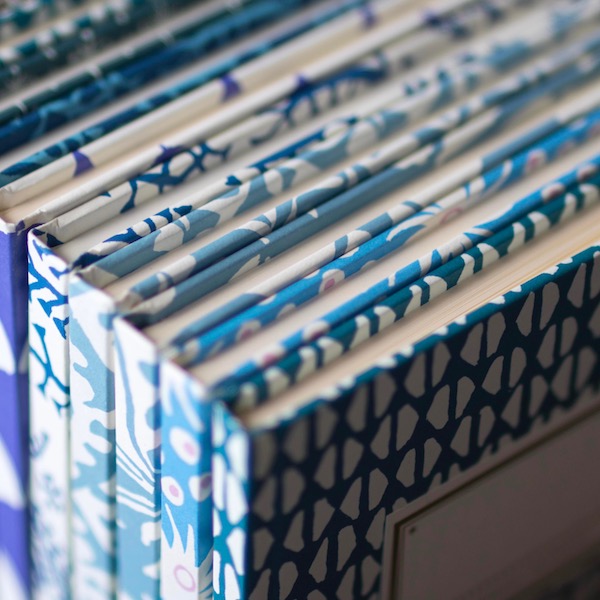
The paper in our notebooks is ideal for writing with a fountain pen. It is a very smooth 90 gsm paper in a warm ivory colour which is much gentler on the eyes than a bright white paper. It is a fine paper but with no bleed-through and no show-through or ghosting. It is uncoated with a fairly fast dry time but only slightly ‘toothy’ and no feathering.
HOW DO I PRINT WITH AND LOOK AFTER MY PRINTING BLOCKS?
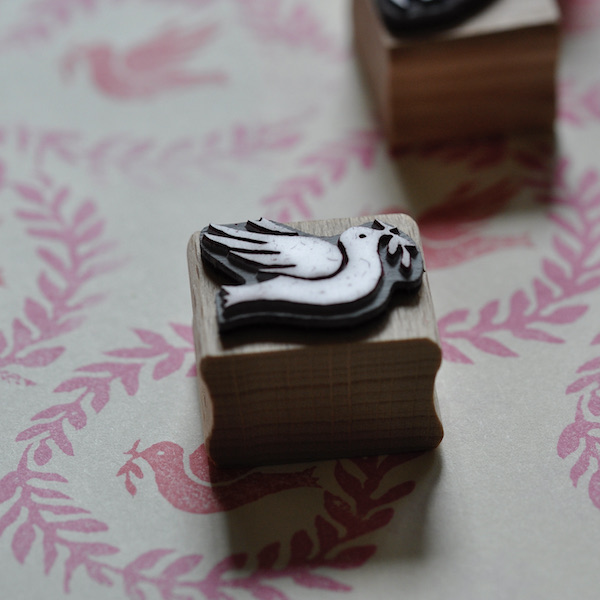
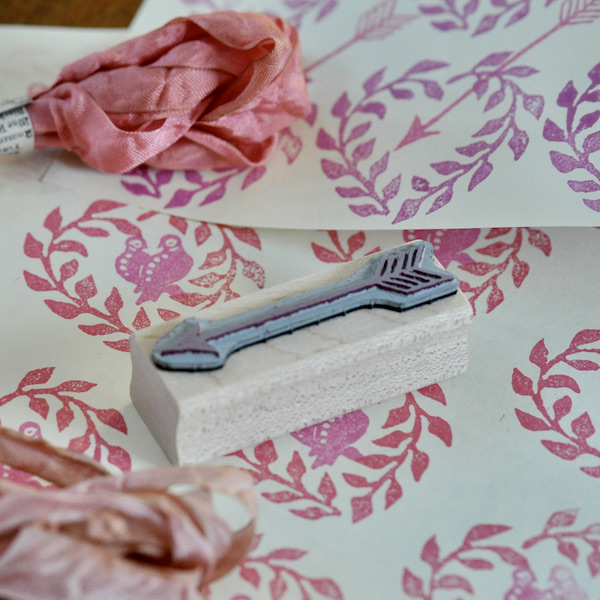
You will get the best results printing onto a matte, uncoated paper.
Work on a smooth, flat surface. Putting a pad of paper under the paper or card you are printing onto will enhance the clarity of your print by providing just a tiny bit of give when you press the block down.
We supply Memento Ink Pads because we think they provide the best array of colours and pad design is excellent, with no edges, allowing you to ink a block that is larger than the pad itself. But the principles are the same with any ink pad. To apply ink to the block, put the ink pad flat on your work surface and lightly press the printing block down onto it with an even pressure. We usually touch the block to the pad twice to make absolutely sure we’ve covered the whole printing surface. Don’t press too hard because if you do, ink gets onto the non-printing surfaces and crevices and the print won’t be clean.
Now press the inked printing block onto the paper with a much firmer, and still even, pressure, for a few seconds and remove, being careful not to smudge. The ink should dry on a matte paper within ten seconds or so.
You can re-ink without bothering to clean the block. If changing colour, and in particular if printing with a light ink after using a dark ink, you can clean almost all the old ink off the block most quickly and easily by printing with it once or twice on a piece of scrap paper.
It’s useful to know that a new block will often print badly and unevenly for the first few tries, so break it in by printing on a piece of scrap paper before you use it on your real work. Also this helps you to get a sense of what orientation you want to print the block in without spoiling your work.
We generally don’t bother to clean printing blocks, except by blotting excess ink off on scrap paper. But if you want to keep them pristine, gently scrubbing the rubber surface with an old toothbrush, moistened with water and a drop of washing up liquid, will return them to a nearly-new state.
CAN CAMBRIDGE IMPRINT MAKE BESPOKE STATIONERY FOR ME?
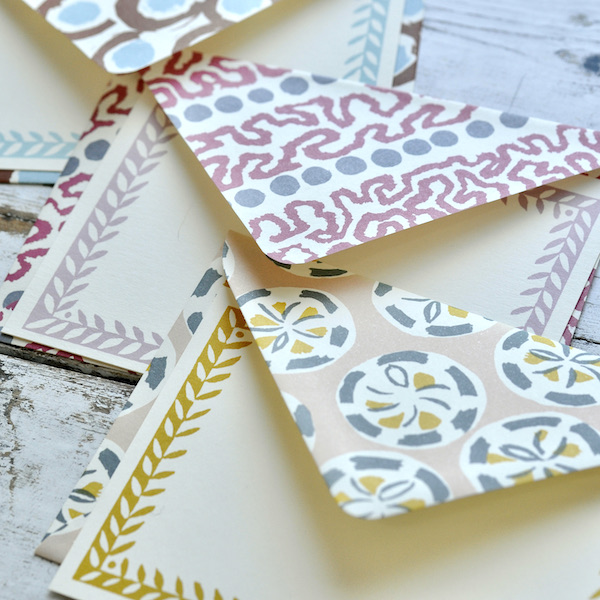
Our products are printed on a huge Heidelberg lithographic press in hand-mixed colours. This means that we have to have a large print run in order to justify the setting-up costs. We cannot print in small batches. Therefore we are not able to produce bespoke stationery for individual clients. We suggest that you look instead for a letterpress printer in your area.

